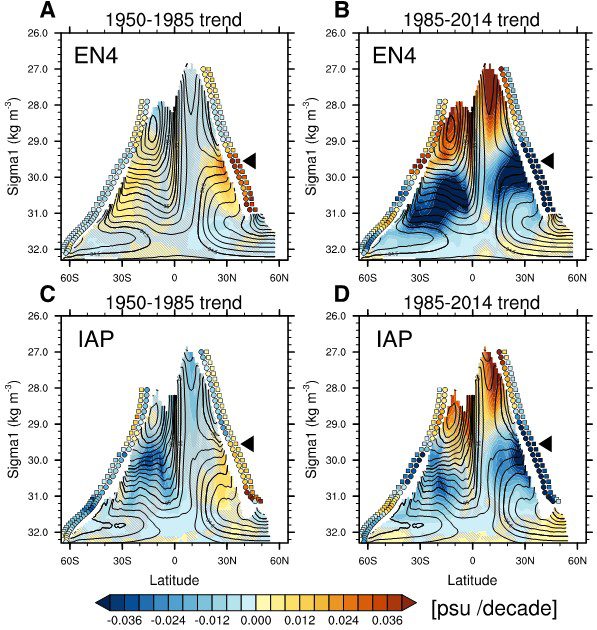Shi, J.-R., Wijffels, S. E., Kwon, Y.-O., Talley, L. D., & Gille, S. T. (2023). The competition between anthropogenic aerosol and greenhouse gas climate forcing is revealed by North Pacific water-mass changes. Science Advances, 9(38), eadh7746. https://doi.org/10.1126/sciadv.adh7746

Zonally averaged observed salinity trends in density space in the Pacific basin. Salinity trends [colors, psu/decade] from the EN4 product for (A) 1950-1985 and (B) 1985-2014. (C and D) Observed salinity trends from the IAP product. Climatological annual mean salinity is shown as black contours, with thicker contours in every 0.5 psu. Circles are winter surface salinity anomalies at the salinity front (dSoutcrop), and squares are the salinity anomalies due to the outcrop meridional shift (dSshift ; psu/decade). Black triangles indicate the density level where the mean surface salinity meridional gradient is the maximum (with negative values), i.e. the salinity front, in the North Pacific. Regions where the linear trend is not significant at the 95% confidence level are hatched in gray.
The anthropogenic aerosol (AA) effect overwhelms the greenhouse gas (GHG) effect during 1950-1985 in driving salinity changes on density surfaces, while after 1985 the GHG effect dominates. These observations reveal this transition in climate forcing around 1985 and highlight the important role of AA climate forcing on our oceans’ water masses. (Image provided by Jia-Rui Shi)
